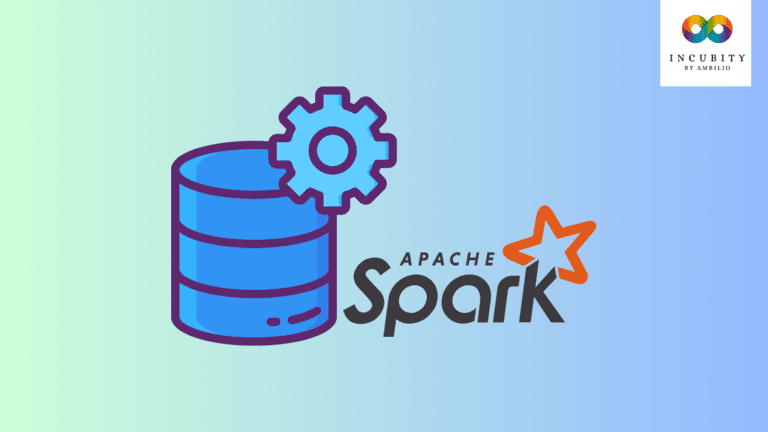Predicting bank loan defaults is a crucial task for any financial institution. Early detection of potential defaults can help banks take proactive measures to mitigate losses and protect their bottom line. In this article, we will delve into the process of building a powerful loan default prediction model using logistic regression. We will begin by explaining the problem statement, followed by a brief overview of the logistic regression model and the data that will be used. Finally, we will build the model, evaluate its performance, and discuss the implications of our findings. With the help of this model, banks can gain valuable insights into the creditworthiness of their borrowers and make more informed lending decisions. Join us as we explore the exciting world of predictive modeling for banking!
Banking Loan Default Prediction
Bank loan default prediction is a common problem in the banking industry, where the goal is to predict whether a loan applicant will default on their loan. The problem is of particular interest to banks and financial institutions because of the significant financial losses that can result from loan defaults.
The problem is typically framed as a binary classification problem, where the goal is to predict whether a loan applicant will default (i.e., fail to repay the loan according to the terms of the loan agreement) or not. The outcome variable is binary (default or not default) and the input variables are the characteristics of the loan applicant, such as income, credit score, employment history, and previous loan history.
The main challenge in solving the bank loan default problem is to accurately predict which loan applicants are most likely to default so that the bank can take appropriate action to avoid the risk of loss. This requires a good understanding of the factors that are most important in determining loan default, as well as the use of appropriate modeling techniques.
The bank loan default problem is important because if a bank is not able to predict the loan default correctly, it could lead to a significant financial loss for the bank. Additionally, if a bank is too conservative in its lending and refuses loans to many creditworthy applicants, this could lead to missed business opportunities and lost revenue. Therefore, the bank needs to have a good model to predict loan default.
Logistic Regression
Logistic regression is a widely used statistical method for binary classification problems, where the goal is to predict one of two outcomes based on a set of features. It is a supervised learning classification algorithm. The model is based on the logistic function (also known as the sigmoid function) which takes input values and maps them to a probability between 0 and 1. The logistic function is used to model the probability of a certain class or event existing such as the probability of default on a loan.
The logistic regression model is simple and efficient, it can be easily implemented with standard optimization techniques and it is widely available in many software libraries. It is also easy to interpret, as the model coefficients can be used to estimate the relative importance of each feature in the model.
One of the main advantages of logistic regression is its ability to handle nonlinear relationships between the independent variables and the target variable by using the logistic function to model the probability of the target variable. Logistic regression also performs well when the sample size is relatively large, and when there are not too many irrelevant features in the model.
However, logistic regression has some limitations as well. It is sensitive to irrelevant features and it does not perform well when the sample size is small. Also, logistic regression assumes that the relationship between the independent variables and the target variable is linear which might not always be true.
In general, logistic regression is a good choice for binary classification problems when the sample size is relatively large and when the relationship between the independent variables and the target variable is believed to be linear. However, when the sample size is small or the relationship is non-linear, other classification models such as decision trees or random forests should be considered.
Why Logistic Regression
As logistic regression is a method for binary classification problems, it is well-suited for modeling bank loan default, which is a binary outcome (default or not default). There are several reasons why logistic regression is a good choice for building a bank loan default model:
- Linearity assumption: Logistic regression assumes that the relationship between the independent variables and the target variable is linear, which is a reasonable assumption for many bank loan default models. The logistic function can handle non-linear relationships as well.
- Efficiency: Logistic regression is a simple and computationally efficient model. It can be easily implemented with standard optimization techniques and is widely available in many software libraries.
- Interpretability: Logistic regression is easy to interpret, as the model coefficients can be used to estimate the relative importance of each feature in the model. This can provide valuable insights into the factors that are most important in determining loan default.
- Handling categorical variables: Logistic regression can handle categorical independent variables with the help of one-hot encoding.
- Handling missing data: Logistic regression can handle missing data relatively well, as compared to other models like decision trees, which can be sensitive to missing data.
We have to mention that while logistic regression is a good choice for a bank loan default model, it’s not the only choice. Other models such as decision trees, Random Forest, XGBoost, or LightGBM can be used as well, depending on the specific dataset and the requirements of the problem.
Banking Loan Default Prediction Model
In this section, we will build a logistic regression model to solve the problem. We will use a dataset that contains information on past loans and their outcomes. You can find the data here.
First, let’s import the required libraries, and create a data frame to store the data.
| import numpy as np import pandas as pd import matplotlib.pyplot as plt import seaborn as sns from sklearn.model_selection import train_test_split from sklearn.linear_model import LogisticRegression from sklearn import metrics data=pd.read_csv(“loan_data.csv”) data.info() |
<class ‘pandas.core.frame.DataFrame’>
RangeIndex: 614 entries, 0 to 613
Data columns (total 13 columns):
# Column Non-Null Count Dtype
— —— ————– —–
0 Loan_ID 614 non-null object
1 Gender 601 non-null object
2 Married 611 non-null object
3 Dependents 599 non-null object
4 Education 614 non-null object
5 Self_Employed 582 non-null object
6 ApplicantIncome 614 non-null int64
7 CoapplicantIncome 614 non-null float64
8 LoanAmount 592 non-null float64
9 Loan_Amount_Term 600 non-null float64
10 Credit_History 564 non-null float64
11 Property_Area 614 non-null object
12 Loan_Status 614 non-null object
dtypes: float64(4), int64(1), object(8)
memory usage: 62.5+ KB
We see that there are null values in the dataframe, as it has 614 rows, but some columns have less than 614 non-null values.
A Logistic Regression model gives better results when the data size is large, so we will try to fix the data a little, to keep as many rows as possible.
We will start by filling the null values in the LoanAmount column with the mean of LoanAmount non-null values. Then, we will fill the null values in the credit history with the most occurring value (1 which means good history, and 0 which means bad history).
| data[‘LoanAmount’]=data[‘LoanAmount’].fillna(data[‘LoanAmount’].mean()) print(data[‘Credit_History’][data[‘Credit_History’]==1].count()) print(data[‘Credit_History’][data[‘Credit_History’]==0].count()) |
475
89
As the number of customers with good credit history (475) is way more than those with bad credit history (89), we will fill the rows with null creadit_History values with 1 (which means good credit history).
| data[‘Credit_History’]=data[‘Credit_History’].fillna(1) |
This kind of data fixing is acceptable in our case only, because we are building this model for educational purposes. However, in the real world, banks will have way bigger datasets, with no null values, and they will build their model on real data only.
Now, we will choose the features (columns) we will use in the logistic regression model. I have tried several collections of features, then I chose to go with the following one:
| data=data[[‘Education’,‘ApplicantIncome’,‘LoanAmount’,‘Loan_Amount_Term’,‘Credit_History’,‘Loan_Status’]] |
So the model will use ‘Education’, ‘Applicant Income’, ‘Loan Amount’, ‘Loan Amount Term’, and ‘Credit History’ features, and the target will be the status of the loan.
After choosing features, we drop the rows containing null values and display our dataframe’s info.
| data=data.dropna() data=data.reset_index(drop=True) data.info() |
<class ‘pandas.core.frame.DataFrame’>
RangeIndex: 600 entries, 0 to 599
Data columns (total 6 columns):
# Column Non-Null Count Dtype
— —— ————– —–
0 Education 600 non-null object
1 ApplicantIncome 600 non-null int64
2 LoanAmount 600 non-null float64
3 Loan_Amount_Term 600 non-null float64
4 Credit_History 600 non-null float64
5 Loan_Status 600 non-null object
dtypes: float64(3), int64(1), object(2)
memory usage: 28.2+ KB
As logistic regression models don’t work with categorical values, we have to replace those values (‘Education’ and ‘Loan Status’) with numerical ones.
| data[‘Loan_Status’].replace(‘Y’,1,inplace=True) data[‘Loan_Status’].replace(‘N’,0,inplace=True) data.Education=data.Education.map({‘Graduate’:1,‘Not Graduate’:0}) |
Now, we split the data into training data and testing data.
| x=data.iloc[1:600,0:5].values y=data.iloc[1:600,5].values x_train, x_test, y_train, y_test=train_test_split(x,y,test_size=0.2,random_state=0) |
The final step is fitting the model on the training data, and testing it afterward on the testing data, then checking the accuracy of our model.
| model=LogisticRegression(solver=‘lbfgs’, max_iter=1000) model.fit(x_train,y_train) lr_prediction=model.predict(x_test) print(“Accuracy= “, metrics.accuracy_score(lr_prediction,y_test)) |
Accuracy= 0.8166666666666667
Our model’s accuracy is 81.6%. We can get better accuracy when using a larger dataset, but this is just a demonstration of a logistic regression model, so we can accept this accuracy.
Conclusion
In conclusion, we have successfully built a loan default prediction model using logistic regression. The model was trained on a dataset of bank loan applicants and was able to predict defaults with an acceptable level of accuracy. Building the model involved several key steps, including data preprocessing, feature selection, and model training and evaluation.
It’s worth noting that there are other algorithms that can be used for the same task such as Decision Trees, Random Forests, and Gradient Boosting. Each algorithm has its strengths and weaknesses, and the choice of algorithm depends on the specific problem and dataset. In some cases, a combination of different algorithms may perform better than any single algorithm. You can look more into that, so you know exactly which algorithm to use in your own model.







